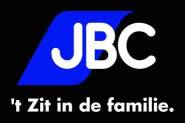James’s blog
Double acts: Second inversion
10 Dec 10 | Re: Advanced comedy alchemy
The other week I was talking about Lee and Herring and how they had come up with a clever inversion of the standard comedy double act. Just to summarise what I said there, a normal Cannon-and-Ball-type double act works like this:
- Straight man pretends to try and get on with the show.
- Funny man gets it wrong and interrupts and goes off on tangents, doing anything he can to subvert what the straight man is doing.
- Funny man undermines the straight man and gets most of the laughs.
And here’s how Lee and Herring’s new version worked:
- Straight man pretends to try and get on with the show.
- Funny man gets it wrong and interrupts and goes off on tangents, doing anything he can to subvert what the straight man is doing.
- Straight man alternately corrects, ignores and tells off funny man and gets on with the show despite him.
- Straight man gets most of the laughs!
Incidentally, that must make Richard Herring the most generous funny man in double act history.
With me so far? Good. Now, if the above is the first inversion of the double act relationship, I can now add a second inversion courtesy of the new Alan Partridge shorts that you can find on the Fosters Funny website (worth watching if you haven’t come across them already).
In these, the Partridge character, Alan Partridge, forms a double act with one Sidekick Simon, played by rising comedy star Tim Key (who I used to sort of know but not that well). The set-up here is that while Alan Partridge is predictably obtuse and unfunny, his sidekick is a reasonably funny guy. Partridge responds to Simon’s pretty good jokes by alternately misunderstanding them, stepping on them and laughing too much at them. But although Simon is the funnier character, you watching at home in front of your computer will mainly be laughing at Alan Partridge. This is because the programme is about a double act, not by a double act, so although some of the jokes the characters make may be funny in themselves, the greater part of the humour stems from the situation of the members of the double act failing to do what they’re meant to do, ie be funny (plus the complex effects this has on their status relationship). Thus Tim Key by being funny becomes the straight man, while Steve Coogan, by being ostensibly unfunny, gets most of the laughs.
I’m not sure whether this is the first meta bizarro-double act of this type; I can’t think of another just now. But perhaps interestingly, I would say that it’s closer to the three-step Cannon and Ball standard model than the four-step Lee and Herring inversion - there’s no extra twist where Sidekick Simon would hilariously put Partridge in his place and reclaim the laughs for himself. So, if any budding comic alchemists are reading this, could there yet be room for a third inversion?
Posted by P SCOTT at 21:23
[Or dive into the blarchive...]
